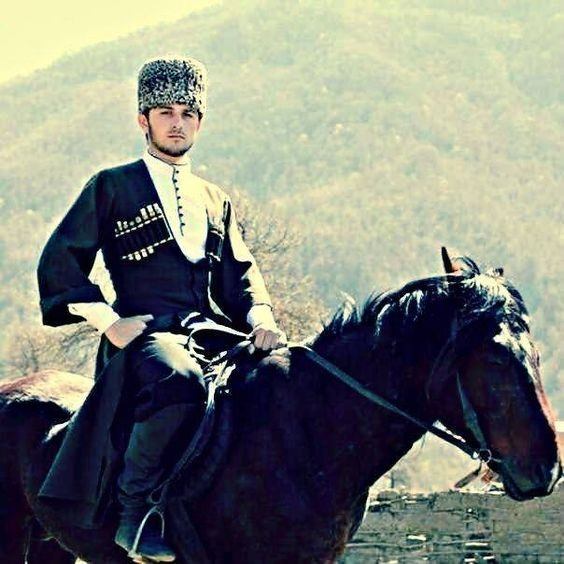Who are the Chechens?
The Chechens are the native inhabitants of the central North-East Caucasus. Their own term for themselves is “nokhchi” (the grandsons of Prophet Nouh). There are early references to them in Ancient Greek, Armenian and Georgian sources, where they are designated variously as Dzurdzuki, Michkizi, Burteli, Shishan, Nakhchmaty, Shibutyani, Aukhs and Kistis. The name Chechnya (or Chechenia) was derived in the 18th century from the village of Chechana 15 kilometres south-east of Grozny.
If we are to believe the tyaptari, the old Chechen chronicles inscribed on parchment rolls that were burnt at Stalin’s behest in 1944, the Nakh tribes arrived here from Sumeria via Urartu/Media. By the first millennium AD they had settled between the Terek, Aksai and Argun rivers as Lamanan-nakh (mountain clans) and between the Terek and Sunzha rivers as Okharan-nakh (valley clans). In the 8th century BC the valley clans merged with the Scythians/Sarmatians, who spoke an Iranian language, and became the Alans, the ancestors of today’s Ossetians. The mountain clans founded an association of clans called Dzurdzuketia, which survived into the early Middle Ages despite incursions by Khazars, Huns, Arabs, Persians, Mongols and others.
The Chechens’ homeland was the only territory in the Caucasus where feudal structures never took hold. They knew neither princes nor kings, neither taxes nor the force of the state. They were free farmers working their own land, and their only duties were to their reputation and that of their family and clan. Every clan lived in a specific area, had its own holy mountain and built its own towers for defence and residential purposes. At each tier – the extended family (dosal), the clan (taip), the tribe (tukkhum) and the country (mehkh) – there was a council of elders to determine social and political affairs (although reputation was the decisive factor in the election of its members, rather than age). The system was founded on the code of common law, the adat, which applied throughout the Caucasus. It required respect for older people, women and children, hospitality and social justice. It also stipulated that nature should be protected, that animals should not be hunted while grazing, and that a community decision was needed to fell a fruit-bearing tree. It was also the basis for jurisdiction, blood feuding and all social matters. The greatest moral virtue to which it subscribed was to defend one’s family, the tombs of the dead, the country and its liberty. Riding and the use of weapons was learned in childhood. All Chechen greetings contain the word “freedom”.
Religion of the Chechens: Islam
For a long time the Chechens worshipped natural deities, especially the sun-god Malkha-Dela, whose name has become the generic Chechen term for God. In the mountain regions graves are still called sun-graves, and ancient rock art with solar symbols testifies to the cult of the sun. One of the oldest Chechen tukkhum (tribe) is Myalkiy, the “people of the sun”. Other gods revered by the Vainakhs (Chechens and Ingush) include Ziu-Dela (the fire-god), Elta (god of hunting), Tusholi (goddess of fertility) and Erda (goddess of the house). Others were Dika-Dela (goddess of truth), Kchokha-Dela (goddess of peace) and Pkha-Dela (god of place). Chechens still recall a rite of rain to summon the rain-god Khin-Dela.
The form of Islam practised in Chechnya today, the Sufism of the Naqshbandi and Qadiri tariqats (orders), arrived from Dagestan in the late 18th century. The essence of Sufism is a close bond between a pupil (murid – the seeker) and a teacher, the sheikh. The sheikh promises to help the murid obtain mystic experience of God and to intercede for him at the Last Judgment. The murid shows humility and obedience to the sheikh and receives his instruction on all questions of religion and life. We do not know for certain whether Sufism was already being taught by Sheikh Mansur Ushurma, who organised ghazavat (holy war) against the conquering Russian infidels from 1785 to 1791 on the basis of strict religious morals and the shariat (Islamic law). From 1825 the Chechens began to back the Dagestani religious leaders Mullah Mohammed, Ghazi Mohammed and Imam Shamil. Shamil established a theocratic state with religious foundations in Chechnya and Dagestan, and for forty years it resisted Tsarist expansionism. It eventually crumbled, however, being too autocratic to suit the Chechen concept of freedom, exacerbated by incompatibilities between shariat and adat, and no doubt the powerlessness that prevailed in the face of Russia’s untiring armies.
